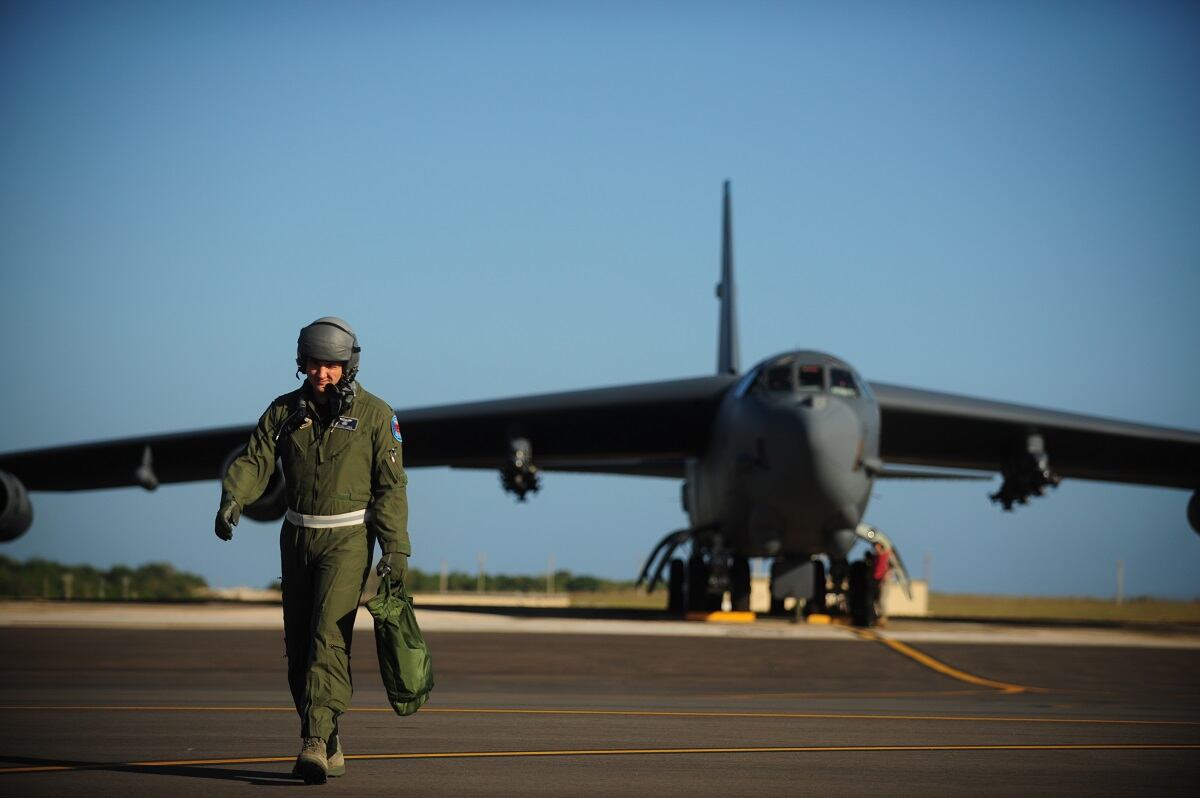The 2019 Aviation Bonus Program, unveiled Wednesday, offers mobility, special operations and unmanned aircraft pilots more money — and the option of a shorter service commitment.
The Air Force is increasing the annual aviation bonuses offered to some 11M mobility pilots after declining take rates last year alarmed top officials.
The maximum bonus amount of $420,000 available for mobility pilots whose initial pilot training service commitment — typically around 11 years — expires in 2019 will remain unchanged: Those who sign up for contract extensions of 10 to 12 years in fiscal 2019 will receive $35,000 annually, the same as in fiscal 2018.
But those who sign up for shorter-term extensions will see a noticeable increase. Mobility pilots who extend their contracts from three to nine years in 2019 will also get annual payments of $35,000, whereas last year, they would have received $30,000 per year for signing up for four to nine more years.
The bonus program announcement also shows that 11S special operations forces pilots whose initial service commitment expires this year will see the same increase as mobility pilots over last year. And 18X and 11U remotely piloted aircraft pilots will now be eligible to receive the maximum $420,000 bonus amount. Last year, 11U pilots were ineligible, and 18X pilots could only sign up for four to nine more years, and would receive a $35,000 annual bonus. But now, both categories of RPA pilots can sign up for anywhere from three to 12 more years.
All categories of pilots who are eligible for the program will be able to sign up for shorter-term contract extensions and get a bonus. In 2018, four years was the shortest extension a pilot could sign up for and receive an annual bonus, but this year, the Air Force is offering three-year extensions.
RELATED

The so-called “take rate” for mobility pilots, or the percentage of eligible pilots signing up for the bonus, dropped from 55.7 percent in fiscal 2015, to 47.6 percent the following year. It dropped further, to 43.9 percent in fiscal 2017 before hitting 37.9 percent last year. In other words, fewer than four in 10 pilots were choosing to remain in uniform.
Gen. Maryanne Miller, head of Air Mobility Command, said at a panel discussion last September that she was concerned about the drop in the percentage of mobility pilots accepting the hefty retention bonuses. AMC pilots usually signed up for those retention bonuses at about the same rates as other active-duty pilots, she said, but the declining rate in 2018 drew her attention.
AMC spokesman Col. Christopher Karns said last month that operations tempos are stressing pilots, and AMC is trying to find ways to take the pressure off them and get them flying more. He also cited the improving economy and airlines' efforts to hire experienced pilots away from the military as other reasons for the decline.
Across the Air Force, take rates ticked up slightly last year to 45 percent, halting two years of declines. But the overall number of pilots signing up for retention bonuses dropped from 476 in 2017 to 418 in 2018. According to service data, 11H rescue, 11S special operations forces, and 11U and 18X RPA pilots also recorded declines in their take rates last year.
The Air Force is struggling to correct a shortfall of roughly 2,000 pilots, or roughly 10 percent of the total, that it fears is placing too great of a burden on remaining pilots. One of several solutions the Air Force has come up with is to offer extremely generous retention bonuses in an attempt to compete with the higher salaries offered by commercial airlines.
Bonus amounts for 11F fighter pilots and 11B bomber pilots will remain virtually unchanged at the maximum $35,000 per year for three to 12 years. Also, 11R command, control, intelligence, surveillance and reconnaissance pilots and 11H combat search-and-rescue fixed wing pilots’ bonuses will remain virtually unchanged at $30,000 for extensions of three to nine years, and $35,000 for 10- to 12-year extensions.
The service’s 12X combat systems officers and 13B air battle managers can receive $20,000 annually for signing up for three to six more years, or $25,000 annually for seven to nine more years. For CSOs, that’s virtually unchanged from last year, but air battle managers whose initial service commitment had expired were ineligible for the bonus in 2018.
But 11H rotary wing CSAR pilots will see a slight decline in possible bonuses this year. In 2018, they could receive annual bonuses of $28,000if they signed up for four- to nine-year extensions. But in 2019, they can get annual payments of $25,000 for three- to nine-year extensions.
Mobility pilots will also have the option of accepting a lump-sum, up-front payment of $100,000 for seven- to nine-year contracts, or $200,000 for 10- to 12-year contracts, the same offered to fighter and bomber pilots. Last year, they were only eligible for the $100,000 lump-sum payment for seven to nine years, but there was no lump-sum option for 10- to 12-year extensions.
Fixed-wing CSAR and C2ISR pilots will continue to have the option of receiving a $100,000 lump-sum payment if they sign up for seven to nine more years, as they did last year. But 11S SOF pilots will lose that option this year.
Stephen Losey is the air warfare reporter for Defense News. He previously covered leadership and personnel issues at Air Force Times, and the Pentagon, special operations and air warfare at Military.com. He has traveled to the Middle East to cover U.S. Air Force operations.




